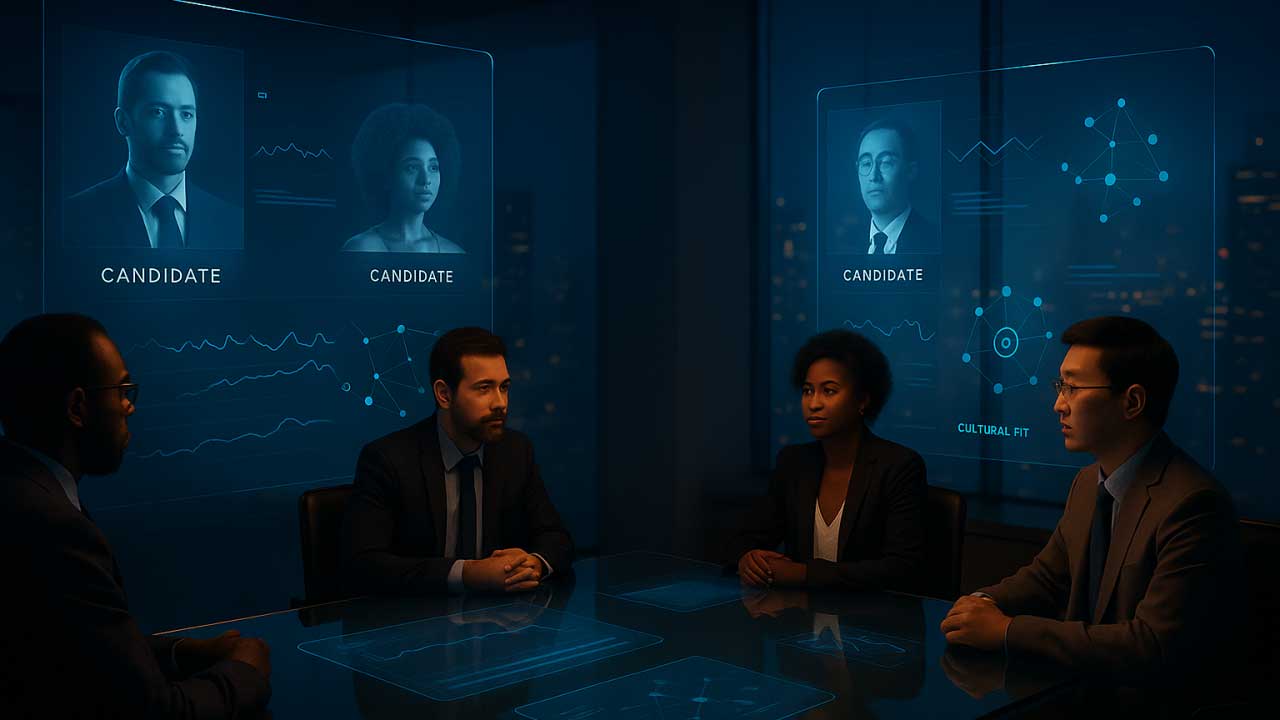Além da aprovação e reprovação: criando uma estrutura de adjudicação mais inteligente com IA

Passamos décadas construindo sistemas de triagem que levam a um único resultado: aprovação ou reprovação.
Mas o caractere não cabe nas colunas binárias. E nem o risco.
No entanto, a maioria das triagens ainda usa como padrão regras simplificadas demais: sinalizado é igual a rejeitado. Limpo é igual a aprovado. Qualquer nuance é ignorada ou intensificada por medo.
Isso não é tomada de decisão. Isso é evitar riscos disfarçado de processo.
A armadilha binária
As decisões de contratação que dependem da lógica de aprovação/reprovação não levam em conta o que realmente importa: contexto, visão baseada em padrões e proporcionalidade do risco.
Eles não deixam espaço para crescimento, mudança ou alinhamento. E eles colocam os rastreadores em um estado constante de paralisia: perder alguma coisa e sua marca sofre, sinalizar algo de forma inadequada e você desencadeia um pesadelo de conformidade.
Considere esta realidade: um candidato teve um único desentendimento público nas mídias sociais há três anos, mas mostra padrões consistentes de comunicação profissional desde então. A triagem binária tradicional sinaliza o incidente. Fim do jogo.
Enquanto isso, outro candidato não tem sinais de alerta óbvios, mas exibe padrões sutis de comunicação manipulativa e crescente hostilidade em várias plataformas ao longo de seis meses. A triagem binária dá a eles um passe limpo.
Qual cenário representa o risco real?
Infraestrutura de inteligência, não apenas informações
A IA não está aqui para fazer a chamada final. Está aqui para estruturar a conversa em torno do que importa.
As plataformas de adjudicação modernas agora podem mostrar aos examinadores:
- Que tipo de comportamento foi sinalizado e como ele se relaciona com o risco operacional
- Se os padrões são consistentes, isolados ou estão aumentando com o tempo
- Análise de trajetória: o comportamento relacionado está se intensificando, melhorando ou resolvido?
- Relevância contextual: esse sinal se alinha aos requisitos da função e à cultura da empresa?
Não se trata apenas de mais dados, mas de inteligência dimensional que dá suporte à tomada de decisões diferenciada sem sacrificar a velocidade ou a consistência.
Reconhecimento de padrões sobre sinalização de eventos
O avanço está passando da detecção de eventos para a análise de padrões. Em vez de perguntar “O que eles fizeram?” agora podemos perguntar “O que sua trajetória de comportamento prevê sobre alinhamento e risco?”
Recentemente, um cliente da Ferretly usou essa abordagem com um candidato sênior de finanças. A triagem tradicional mostrou registros limpos. Mas a análise comportamental revelou um padrão preocupante: o candidato sempre fez declarações inflamatórias sobre regulamentações financeiras e estruturas de conformidade — exatamente as áreas pelas quais seria responsável na função.
Não é desqualificante no papel. Potencialmente catastrófico na prática.
O juiz humano poderia ver o padrão, entender o contexto e tomar uma decisão informada. O candidato não foi automaticamente rejeitado — ele foi avaliado com todas as informações.
Bandeiras mais inteligentes, decisões mais fortes
O objetivo não é parar de contratar pessoas. É parar de adivinhar sobre as pessoas.
Quando a IA apoia a adjudicação em vez de substituí-la, desbloqueamos:
- Avaliações mais rápidas com uma visão mais profunda
- Cadeias lógicas mais claras que podem ser explicadas e defendidas
- Processos centrados no ser humano que explicam o crescimento e o contexto
- Avaliação de risco proporcional ao impacto real
A realidade competitiva
As organizações que adotam uma adjudicação diferenciada não estão apenas fazendo uma melhor seleção: elas estão contratando com vantagem estratégica.
Eles identificam o alinhamento cultural antes do atrito na integração. Eles identificam um potencial de liderança genuíno que estruturas rígidas perdem. Eles constroem equipes com coerência de valores que se traduz diretamente em desempenho operacional.
Enquanto isso, as empresas presas ao pensamento binário ainda estão rejeitando talentos em vez de bandeiras irrelevantes, ao mesmo tempo em que perdem sinais que realmente predizem o sucesso ou o fracasso.
Construindo a estrutura
A adjudicação inteligente requer uma infraestrutura projetada com base no julgamento humano aprimorada por uma visão algorítmica:
Processamento de sinal: A IA identifica padrões comportamentais relevantes e os apresenta com análise contextual, em vez de sinais brutos.
Avaliação dimensional: Os avaliadores avaliam os candidatos em vários fatores — risco, alinhamento, trajetória e adequação à função — em vez de uma única métrica de aprovação/reprovação.
Lógica explicável: Cada decisão pode ser atribuída a evidências e raciocínios comportamentais específicos, criando processos de contratação defensáveis.
Aprendizagem adaptativa: O sistema melhora com o tempo, aprendendo quais padrões se correlacionam com contratações bem-sucedidas e alinhamento cultural.
Além da conformidade com a inteligência
A era do aprovado/reprovado pressupunha que o risco era binário e o caráter era estático. Ambas as suposições são operacionalmente obsoletas.
A contratação moderna exige sistemas que possam ver padrões, entender o contexto e apoiar a tomada de decisões inteligentes. Não porque a IA seja perfeita, mas porque o pensamento binário nunca foi.
As organizações que criam essa capacidade primeiro não contratarão apenas pessoas melhores. Eles contratarão com precisão, o que cria uma vantagem competitiva sustentável.
Bem-vindo à era da adjudicação inteligente.






